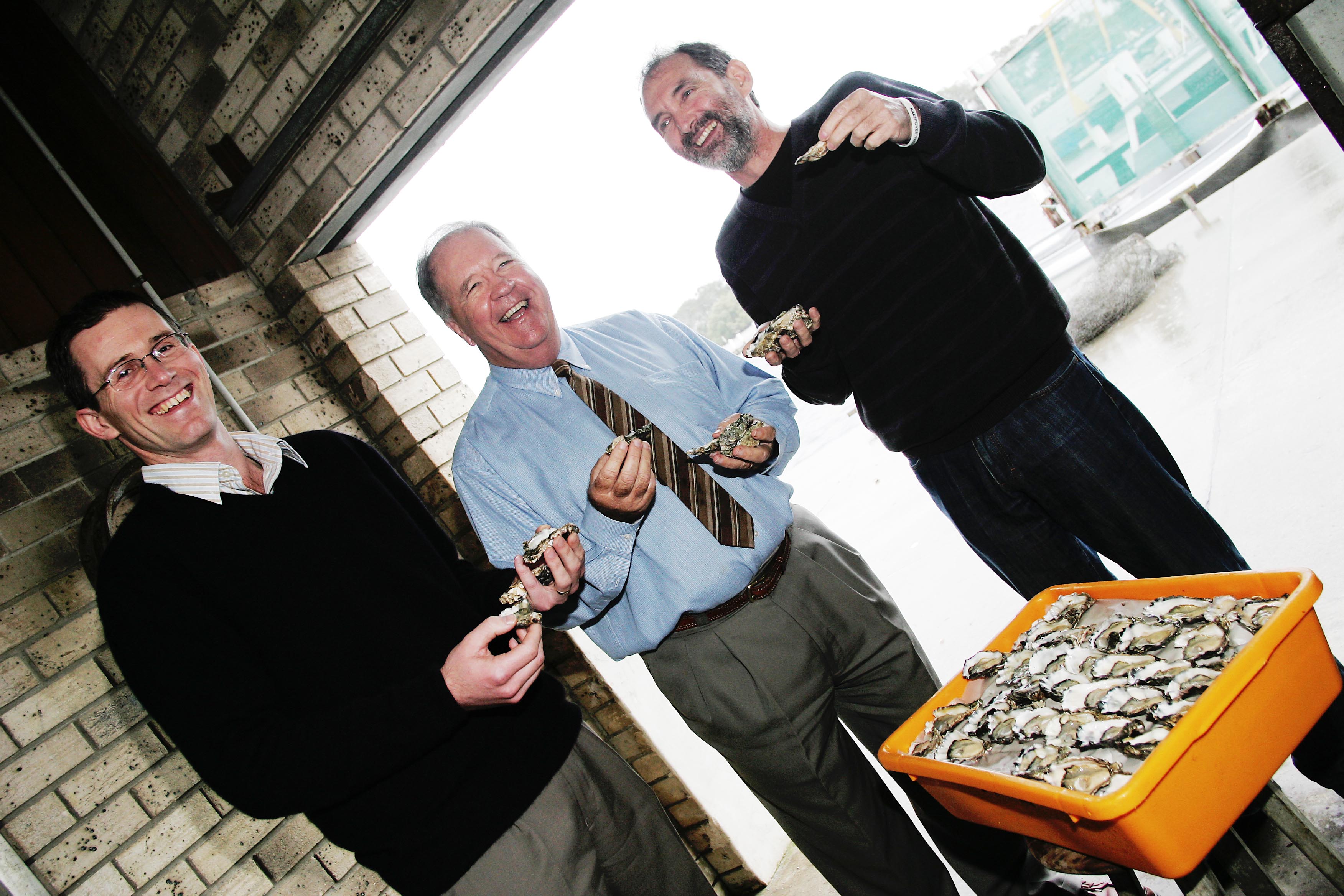
(Left to right) Great Lakes Council natural systems manager, Gerard Tuckerman, Mayor John Chadban and Cr John Weate
The Wallis Lake oyster industry is thriving thanks to an extensive management and restoration program by Great Lakes Council and surrounding communities.
Pollution in the lake 11 years ago resulted in an outbreak of hepatitis A and closure of the oyster industry. In 1998, local council, along with residential, business and farming communities, implemented a catchment management plan. Since then, a number of preventative measures have been put in place to reduce the chance of future outbreaks. Council, however, is not willing to make any guarantees.
“You can never guarantee with this sort of thing,” chair of the Wallis Lake Estuary Management Committee, Cr John Weate, told Government News.
“We have improved water quality and we can harvest oysters without environmental degradation.”
Wallis Lake Oyster Farming is now a $14 million industry, producing over 30 per cent of NSW’s rock oyster supply.
Estuary fishing in the region is worth $10 million annually and tourism is brining in approximately $200 million each year.
Through the ten year program eight wetlands have been created for urban water quality, 110km of waterways have been fenced off from stock, 588 ha of vegetation has been conserved and land effected by erosion and acid sulphate pollution has been rehabilitated.
The program included a $2.1m Great Lakes Coastal Catchment Initiative (CCI) established for Myall, Smiths and Wallis Lakes – the first CCI for NSW.
“These wetlands need to be reinstalled as lungs of the estuary,” Cr Weate said.
Great Lakes Council claims that it is one of the most comprehensive water management exercises to be carried out by any government in Australia.
“Our plans have had a holistic approach to the issue and a realisation that any actions had to be sustainable and consider the pressures that future growth might pit on the region,” Cr Weate said.
“A range of ongoing and future projects are happening that will ensure continuous improvements by all the partners in the process,” he said.
The program has been extended indefinitely, with a new focus on development pressures. Local property developers must “pass the test” for environmental protection and sustainability, Cr Weate said.
The program has also improved the relationship between council and the community over environmental issues. According to Cr Weate, there is “community ownership of the strategy.”
“The community has really made the connection – that how we live and work determines our water quality and in turn, the health of our lake and estuary,” he said.
“They won’t allow any future council or government agency to take their eye off the ball again.”
Comment below to have your say on this story.
If you have a news story or tip-off, get in touch at editorial@governmentnews.com.au.
Sign up to the Government News newsletter
